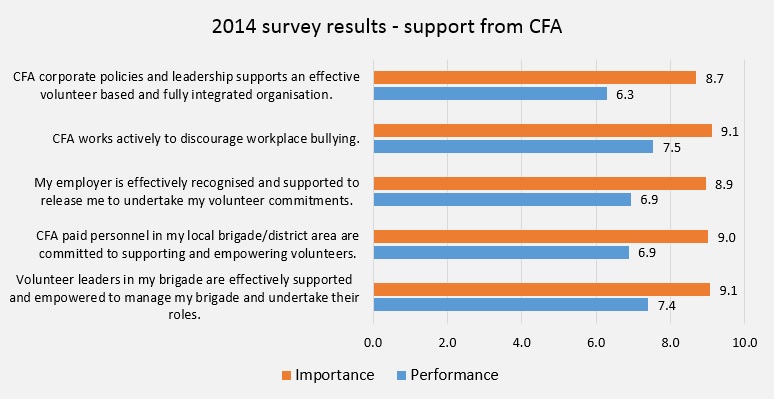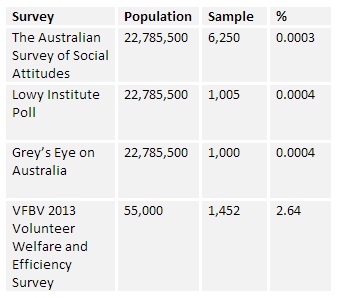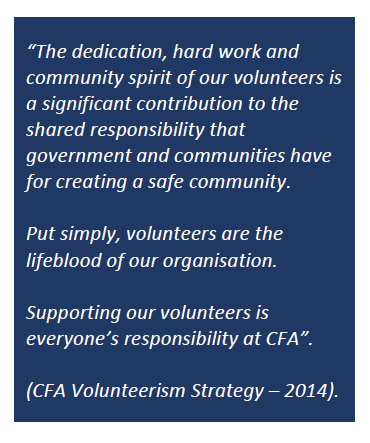Dry Aggregate
1st Kangaroo Flat 24 Points
2nd Drouin/Bunyip 21 Points
3rd Maryvale 8 Points
Wet Aggregate
1st Kangaroo Flat 58 Points
2nd Benalla 52 Points
3rd Traralgon 42 Points
SECTION AGGREGATES:
‘A’ SECTION
1st Kangaroo Flat 82 Points
2nd Drouin/Bunyip 42 Points
3rd Narre Warren 37 Points
‘B’ SECTION
1st Kooweerup 50 Points
2nd Traralgon 47 Points
3rd Cobden 40 Points
‘C’ SECTION
1st Benalla 63 Points
2nd Patterson River 41 Points
3rd St Arnaud 39 Points
2014 CHAMPION BRIGADE: KANGAROO FLAT
Coach David Dargaville, and competitors: Tom Dargaville, Jackson Dargaville, Glen Scholtes, Jamie Hart, Jacob Cahill, James Murphy, Shane Every, Craig Peters, Andrew Smith, Kate Dargaville, Tyler Harris, Nathan Styles, Adam Melis, Cheri O’Neill & Brett Styles.
Results for the 2014 Champion Competitor:
Equal 1st Jamie Hart and Tom Dargaville, Kangaroo Flat 19 points
3rd Steven Myers, Drouin/Bunyip 17 points
=4th Jackson Dargaville & Matt Royal (Maryvale) 14 points
The Victoria / Western Australia Challenge took place after the final event, the Champion Fours, and was won by the Victorian team. The competitors of the two teams for the Victoria / Western Australia Challenge were:
Western Australia:
Coach Horrie Hubble – South Hedland, and competitors
Andrew Seuren, Cory Goodhill & Catcher Dan Lawson – Mandurah Reece Parton, Tim Egerton-Green & Troy Rake – Harvey, Sam Trott – Brunswick Junction, Marlon Baars & Tim Bruce – South Hedland.
Victoria:
Coach David Dargaville, and competitors - Jackson Dargaville,Tom Dargaville, Jamie Hart
& Jacob Cahill – Kangaroo Flat, Peter Every – Wendouree, Kyle Hargreavs – Maffra, Steven Myers – Drouin/Bunyip, Arthur Churchill – Narre Warren, Matty van Tilburg – Moe
RESULTS - EVENT BY EVENT
SATURDAY, 8th MARCH
Event 1, DISCIPLINE CONTEST
Section A: 1st Mornington 90.00%
2nd Melton A 89.55%
3rd Mildura 89.09%
4th Harvey W.A. 87.27%
5th Eaglehawk A 85.91%
Section B: 1st Kyneton 87.27%
2nd Belgrave 86.36%
3rd South Hedland W.A. 83.64%
4th Kooweerup 82.73%
5th Horsham 81.36%
Section C: 1st Knox Group 92.73%
2nd Patterson River 92.27%
3rd Hoppers Crossing 88.64%
4th Benalla 86.36%
5th Whittlesea 85.45%
Event No. 2 – Ladder Race - One Competitor
1st Jackson Dargaville, Kangaroo Flat 6.12 seconds
2nd Troy Ranke, Harvey W.A. 6.68 seconds
3rd Andrew Norman, Hampton Park/Hallam 6.69 seconds
4th Jake Rennie, Tatura 6.70 seconds
5th Cory Goodhill, Mandurah W.A. 6.83 seconds
Event 3 - Hydrant Race - One Competitor
1st Steven Myers, Drouin/Bunyip 11.43 seconds
2nd Michael Coleman, Maffra 11.82 seconds
3rd Josh Pike, Mildura 11.86 seconds
4th Damon Sutton, Wendouree 12.11 seconds
5th Jake Rennie, Tatura 12.48 seconds
Event 4 – B Section Pumper & Ladder – Five Competitors
1st Pyramid Hill 15.69 seconds
2nd Geelong West 15.99 seconds
3rd Traralgon 16.09 seconds
4th Hampton Park/Hallam 16.16 seconds
5th Horsham 16.43 seconds
Event No. 5 - C Section Marshall - One Competitor
1st Leigh Barclay, Belmont 24.97 seconds
2nd Cameron Whelan, Warracknabeal 27.45 seconds
3rd Adam Bishop, Warrnambool 27.62 seconds
4th Devon Winsall, Belmont 27.73 seconds
5th Shaune Winsall, Warracknabeal 27.89 seconds
Event No. 6 - A Section Hose and Ladder Eights
1st Kangaroo Flat 20.72 seconds
2nd Wendouree 21.47 seconds
3rd Maryvale 21.74 seconds
4th Narre Warren 21.77 seconds
5th Eaglehawk A 21.82 seconds
Event No. 7 - B Section Marshall - One Competitor
1st Simon Hanigan, Belgrave 25.67 seconds
2nd Andrew Marshall, Cobden 26.31 seconds
3rd Brad Atkinson, Belgrave 26.88 seconds
4th Cody Brown, Traralgon 27.78 seconds
5th Wayne Sampson, South Hedland W.A. 28.06 seconds
Event No. 8 - C Section Hose and Reel Fours
1st Benalla 17.84 seconds
2nd Whittlesea 18.47 seconds
3rd Stanhope 19.38 seconds
4th St Arnaud 19.55 seconds
5th Warracknabeal 20.11 seconds
Event No. 9 - A Section Marshall - One Competitor
1st Steven Myers, Drouin/Bunyip 23.81 seconds
2nd Matthew Royal, Maryvale 23.99 seconds
3rd Mitch Golding, Drouin/Bunyip 24.41 seconds
4th Thomas Germon, Wendouree 25.31 seconds
5th Damon Sutton, Wendouree 25.44 seconds
Event No. 10 - B Section Hose and Reel Sixes
1st Kooweerup 30.03 seconds
2nd Werribee 30.51 seconds
3rd South Hedland, W.A. 32.11 seconds
4th Maldon 33.18 seconds
5th Cobden 34.27 seconds
Torchlight Procession
1st Maffra 96%
=2nd Hoppers Crossing & Mildura 93%
4th Melton 91%
=5th Kangaroo Flat & Swan Hill 90%
SUNDAY, 9th MARCH
Event 11– C Section Pumper & Ladder – Five Competitors
1st Eaglehawk B 17.80 seconds
2nd Mooroopna 18.43 seconds
3rd Benalla 18.46 seconds
4th Warracknabeal 18.79 seconds
5th Seymour 20.17 seconds
Event 12 - A Section Marshall - Two Competitors
1st James Murphy & Shane Every, Kangaroo Flat 14.29 seconds
2nd Jared Squires & Josh Powell, Melton 14.72 seconds
3rd Chris Johnson & David Fromberg, Maryvale 15.11 seconds
4th Tim Edgerton-Green & Luke Jones, Harvey W.A. 15.37 seconds
5th Adrian Jones & Dale Hutchinson, Narre Warren 15.49 seconds
Event 13 - B Section Hose and Ladder Eights
1st Werribee 23.29 seconds
2nd Traralgon 23.63 seconds
3rd Cobden 23.82 seconds
4th Kyneton 24.43 seconds
5th Sorrento 24.61 seconds
Event 14 - C Section Marshall - Two Competitors
1st Mark & Tim Mullins, Patterson River 15.36 seconds
2nd Brenton & Leonard Lawrence, Hoppers Crossing 16.65 seconds
3rd Adam & Sam Bishop, Warrnambool 17.67 seconds
4th Matthew & Cameron Crellin, Mansfield 18.23 seconds
5th Nick Bailey & Les Palpratt, Benalla 18.49 seconds
Event 15 - A Section Hose and Reel Eights
1st Kangaroo Flat 26.95 seconds
2nd Narre Warren 27.69 seconds
3rd Drouin/Bunyip 28.03 seconds
4th Bendigo 28.16 seconds
5th Wendouree 28.39 seconds
Event 16 - B Section Marshall - Two Competitors
1st Andrew Marshall & Ben Nelson, Cobden 15.84 seconds
2nd Tim & Joshua Harvey, Kooweerup 16.34 seconds
3rd Brendan Webbers & John Roberts, Kooweerup 16.95 seconds
4th Russell Dow & James Templeton, Belgrave 17.38 seconds
5th Liam Bunn & Brett Magrath, Kyneton 17.47 seconds
Event 17 - C Section Hose and Reel Sixes
1st St Arnaud 30.47 seconds
2nd Whittlesea 32.06 seconds
3rd Warracknabeal 32.17 seconds
4th Sale 33.88 seconds
5th Mooroopna 34.44 seconds
Event 18 - A Section Hose, Hydrant and Pumper
1st Narre Warren 11.68 seconds
2nd Melton A 11.71 seconds
3rd Dandenong 12.07 seconds
4th Drouin/Bunyip 12.75 seconds
5th Creswick 12.94 seconds
Event 19 - B Section Y Coupling and Ladder Eights
1st Traralgon 33.88 seconds
2nd Sorrento 34.58 seconds
3rd Kooweerup 35.92 seconds
4th Werribee 37.15 seconds
5th South Hedland, W.A. 37.57 seconds
Event 20 - C Section Hose, Hydrant and Pumper
1st Benalla 14.65 seconds
2nd Sale 15.49 seconds
3rd Warracknabeal 15.71 seconds
4th Warrnambool 15.80 seconds
5th Stanhope 16.20 seconds
Event 21 - A Section Y Coupling and Ladder Eights
1st Eaglehawk A 30.37 seconds
2nd Kangaroo Flat 30.40 seconds
3rd Maryvale 33.03 seconds
4th Creswick 33.16 seconds
5th Euroa 33.18 seconds
Event 22 - B Section Hose, Hydrant and Pumper
1st Kooweerup 14.01 seconds
2nd Traralgon 14.69 seconds
3rd Geelong West 15.26 seconds
4th Cobden 16.16 seconds
5th Horsham 16.25 seconds
Event 23 – C Section Y Coupling and Ladder Eights
1st Patterson River 35.40 seconds
2nd Benalla 37.81 seconds
3rd Eaglehawk B 39.24 seconds
4th Whittlesea 39.62 seconds
5th Warrnambool 41.87 seconds
Event 24 - A Section Hose and Reel Sixes
1st Maffra 28.47 seconds
2nd Moe 28.62 seconds
3rd Narre Warren 28.72 seconds
4th Bendigo 28.81 seconds
5th Dandenong 31.98 seconds
MONDAY, MARCH 10th
Event 25 – A Section Pumper & Ladder – Five Competitors
1st Echuca 13.65 seconds
2nd Maryvale 13.95 seconds
3rd Drouin/Bunyip 14.18 seconds
4th Swan Hill 14.42 seconds
5th Dandenong 15.08 seconds
Event 26 - B Section Y Coupling - Four Competitors
1st South Hedland W.A. 8.50 seconds
2nd Werribee 8.59 seconds
3rd Traralgon 8.86 seconds
4th Kooweerup 8.93 seconds
5th Cobden 8.96 seconds
Event 27 - C Section Hose and Ladder Fives
1st St Arnaud 22.16 seconds
2nd Patterson River 23.57 seconds
3rd Sale 23.93 seconds
Event 28 - A Section Y Coupling - Four Competitors
1st Kangaroo Flat 7.82 seconds
2nd Swan Hill 8.16 seconds
3rd Drouin/Bunyip 8.17 seconds
4th Mildura 8.20 seconds
5th Wendouree 8.35 seconds
Event 29 - B Section Hose and Reel Eights
1st Belgrave 29.52 seconds
2nd Maldon 31.93 seconds
3rd South Hedland W.A. 32.26 seconds
4th Cobden 32.31 seconds
5th Geelong West 32.39 seconds
Event 30 - C Section Y Coupling - Four Competitors
1st Benalla 7.86 seconds
2nd Belmont 8.26 seconds
3rd St Arnaud 8.74 seconds
4th Patterson River 8.82 seconds
5th Sale 9.10 seconds
Event 31 - Champion Fours
1st Kangaroo Flat 17.19 seconds
2nd Cobden 17.35 seconds
3rd Maryvale 17.47 seconds
4th Drouin/Bunyip 17.63 seconds
5th Golden Square 18.21 seconds
4th Benalla 24.04 seconds
5th Knox Group 24.19 seconds



 The 2014 VFBV Volunteer Welfare and Efficiency Survey is the third annual survey of Victoria’s CFA volunteers conducted by Volunteer Fire Brigades Victoria.
The 2014 VFBV Volunteer Welfare and Efficiency Survey is the third annual survey of Victoria’s CFA volunteers conducted by Volunteer Fire Brigades Victoria.







































 This report provides comment and detail on matters considered to be important to CFA Volunteers' welfare and efficiency, as measured through the Volunteer Fire Brigades Victoria (VFBV) Volunteer Welfare and Efficiency Survey.
This report provides comment and detail on matters considered to be important to CFA Volunteers' welfare and efficiency, as measured through the Volunteer Fire Brigades Victoria (VFBV) Volunteer Welfare and Efficiency Survey.


















